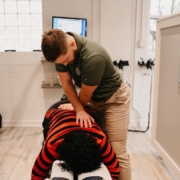Key Benefits of Yoga and Stretching
Yoga and stretching are two practices that have been around for thousands of years, and for good reason. Both of these activities have a wide range of benefits that can help improve physical health, mental wellbeing, and overall quality of life.
In this blog post, we’ll explore some of the key benefits of yoga and stretching, and how they can help you lead a healthier and happier life.
5 Benefits of Yoga and Stretching
- Improved flexibility
One of the most obvious benefits of both yoga and stretching is improved flexibility. By regularly practicing yoga or stretching, you can help your muscles and joints become more supple, allowing you to move more freely and with less discomfort.
Improved flexibility can also help prevent injuries, as your muscles and joints are better able to handle sudden movements or changes in direction.
- Increased strength
While many people associate yoga and stretching with flexibility, these practices can also help increase strength. In particular, yoga poses such as downward dog, plank, and chaturanga can help build strength in the core, arms, and legs.
Similarly, stretching exercises such as lunges, squats, and hamstring stretches can help build leg and glute strength, which can be particularly beneficial for runners and other athletes.
- Better posture
Poor posture can cause a wide range of health problems, including back pain, neck pain, and headaches. Fortunately, both yoga and stretching can help improve posture by strengthening the muscles that support your spine and encouraging proper alignment.
Yoga poses such as mountain pose, tree pose, and warrior pose can help improve posture, as can stretching exercises that focus on the muscles of the back, neck, and shoulders.
- Reduced stress and anxiety
In addition to physical benefits, yoga and stretching can also have a positive impact on mental health. In particular, these practices are known to help reduce stress and anxiety, which are common issues in today’s fast-paced world.
Yoga and stretching can help lower levels of the stress hormone cortisol, while also promoting the production of feel-good hormones such as dopamine and serotonin.
- Improved sleep
Finally, both yoga and stretching can help improve sleep quality, which is crucial for overall health and wellbeing. In particular, yoga and stretching can help promote relaxation and reduce stress, both of which can make it easier to fall asleep and stay asleep.
Additionally, some yoga poses and stretching exercises can help relieve tension in the muscles and joints, which can be particularly helpful for people who suffer from sleep-related pain or discomfort.
Yoga and Stretching Offer a Wide Range of Benefits
In conclusion, yoga and stretching are two practices that offer a wide range of benefits for both physical and mental health. By incorporating these activities into your daily routine, you can improve flexibility, strength, posture, reduce stress and anxiety, and improve sleep quality. So why not give it a try and see the positive changes in your life?










